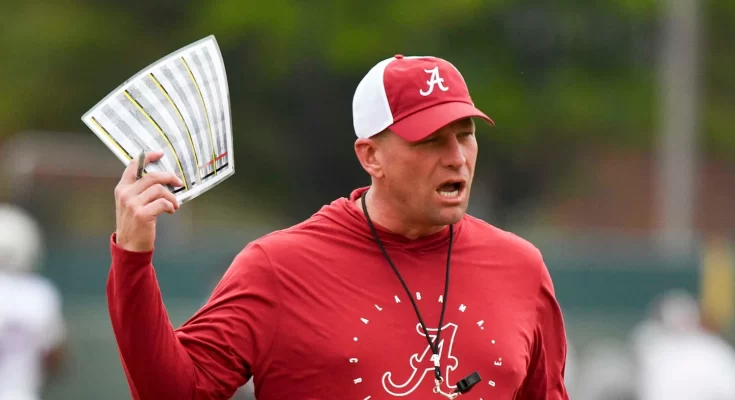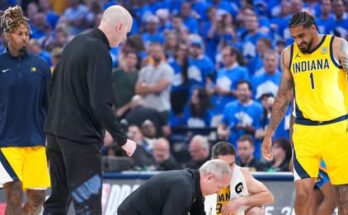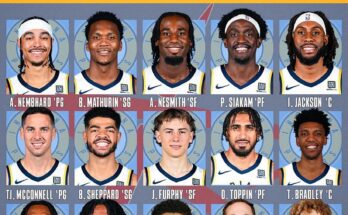Alabama Football Summer Report: Can the Crimson Tide Finally Build a Stable and Dominant Offensive Line Heading into the 2025 Season?
As the Alabama Crimson Tide approach the 2025 college football season, one of the most pressing storylines surrounding the storied program isn’t about their next great quarterback, a flashy wide receiver, or even their reloaded defense. It’s about the foundation of any great football team—the offensive line. For all of Alabama’s talent and national prestige, the offensive line has been an area of inconsistency over the past few years. Now, under new leadership and with renewed purpose, the question is whether this will finally be the year that Alabama regains the stability and dominance up front that defined its championship teams in the past.
Alabama fans have become accustomed to watching physical, technically sound offensive lines manhandle opponents. From the days of Barrett Jones, Chance Warmack, and Ryan Kelly to more recent anchors like Landon Dickerson and Evan Neal, Alabama built a legacy of controlling the line of scrimmage. But in recent seasons, that standard has not been consistently met. Pass protection has wavered, run lanes have been inconsistent, and overall cohesion has been elusive. Those shortcomings have contributed to tighter games, offensive sputtering, and at times, exposed the team in critical matchups.
Heading into the 2025 campaign, however, there is cautious optimism within the program that this could be the turning point. Under the guidance of head coach Kalen DeBoer and offensive line coach Chris Kapilovic, the Tide are not just looking to patch things together—they are attempting to rebuild a trench unit that can be relied upon every Saturday, regardless of the opponent. DeBoer’s offensive philosophy is rooted in efficiency and balance. That means the offensive line doesn’t just need to hold up—it needs to be a strength.
Spring practices gave fans and analysts a glimpse of what the Tide might be building. Though it’s far too early to make declarations, there were moments where the offensive line showed improved communication, better pad level, and a nastier edge. That comes down in part to continuity. After years of rotation and instability, the 2025 group seems to be forming an identity. The key is whether that growth continues through summer and into the fall.
One player who could make all the difference is left tackle Kadyn Proctor. After a highly publicized freshman campaign in 2023 that included early struggles and flashes of brilliance, Proctor briefly transferred to Iowa before returning to Alabama this offseason. His recommitment to the Tide is more than symbolic—it offers Alabama a cornerstone at one of the most critical positions in football. Proctor has all the physical tools: size, length, athleticism, and power. But his return also brings a veteran presence that has seen the highs and lows of SEC line play. He’s no longer a wide-eyed freshman—he’s a leader.
Next to Proctor, the guard positions are still being finalized, but there is no shortage of candidates. Tyler Booker, a returning veteran with All-SEC potential, is expected to hold down one of those spots. Booker is a mauler in the run game and has steadily improved his pass sets. His experience and vocal leadership make him a natural tone-setter. On the opposite side, the battle could involve several younger players, including promising underclassmen like Wilkin Formby or Elijah Pritchett. These are highly-rated recruits who are now in a position to prove they can handle the rigors of SEC play.
At center, the Tide will be looking for consistency and smarts—traits that are essential at a position responsible for making calls and adjustments. James Brockermeyer, a redshirt junior, is one of the names in the mix. Known for his cerebral approach and work ethic, he has been patiently developing behind past starters and now may have his chance to shine. Another option is true sophomore Parker Brailsford, who has impressed with his technique and motor. Whoever wins the job will need to anchor the line and command respect from the rest of the unit.
Right tackle is another spot to watch closely. It’s a position where Alabama has historically placed some of its most dominant blockers. The leading contender may be Elijah Pritchett if he isn’t used at guard, or it could go to someone like Miles McVay, another massive, physically gifted lineman who’s been developing in the program. Either way, the coaching staff is emphasizing competition. No spots are being handed out based on hype or past performance alone.
What separates this year’s effort from previous ones is not just talent, but a renewed sense of urgency and coaching direction. Coach Kapilovic has been praised for his attention to detail and ability to simplify schemes while still demanding excellence. He understands the nuances of zone blocking, gap schemes, and hybrid approaches that allow offenses to stay unpredictable. More importantly, he’s a motivator. The linemen have spoken openly about how much more accountable they feel—how every rep, every drill, is measured and graded. That’s the kind of culture shift Alabama needed up front.
The other element working in Alabama’s favor is the offensive philosophy being installed under DeBoer and offensive coordinator Nick Sheridan. Unlike previous regimes that sometimes leaned too heavily on vertical passing or lacked balance in critical moments, this offense aims to be multiple. That means the line won’t always have to hold blocks for long-developing routes. Instead, the offense will emphasize rhythm, tempo, and strategic leverage. In turn, the line’s job becomes more about precision and timing than brute force every snap.
Still, in the SEC, brute force is required. You have to be able to move people off the ball. Alabama’s success in November and beyond will depend on whether this line can wear down elite fronts like Georgia’s, LSU’s, and Texas’s. That comes down to physicality, but also to cohesion. Five linemen working as one unit—that’s the goal. That’s what Alabama had during its dynastic runs. That’s what has been missing.
The weight room has also been a point of emphasis this offseason. Strength coach David Ballou and his staff have focused on building explosive power and durability in the offensive linemen. Injuries and fatigue have plagued Alabama’s line in recent years, and part of building stability is simply being able to keep the same five guys healthy and on the field week after week. Conditioning drills have taken on a new edge, and players have responded with a sense of professionalism and hunger.
Leadership is another intangible that can’t be overlooked. With veterans like Proctor and Booker taking more vocal roles, the offensive line is developing an internal standard. Coaches can push, but when the expectations come from within the locker room, that’s when real progress is made. Young players are being mentored. Mistakes are corrected without waiting for film sessions. That culture of accountability is what Alabama fans have been waiting to see restored.
Of course, it’s still the summer. No games have been played. Pads haven’t popped for real yet. It’s easy to look good in controlled environments and practice settings. The real test will come when the Tide open their 2025 season against a quality opponent and the lights are bright. Can the line hold up in third-and-long? Can it impose its will in the red zone? Can it protect the quarterback in a hostile road environment? These are questions that only the fall can answer.
But for now, there is a reason to believe that Alabama’s offensive line is on the right track. The pieces are in place. The staff is locked in. The hunger is back. If all those elements come together, the Crimson Tide may not only find stability up front—they may once again dominate there. And if that happens, everything else on the offense becomes easier: the quarterback plays with more confidence, the run game opens up, and the entire identity of the team solidifies.
For Alabama, the offensive line has always been more than just five big guys—it has been the heart of the team. If that heart beats strong again in 2025, the Crimson Tide will be right back in the thick of the national title conversation.



